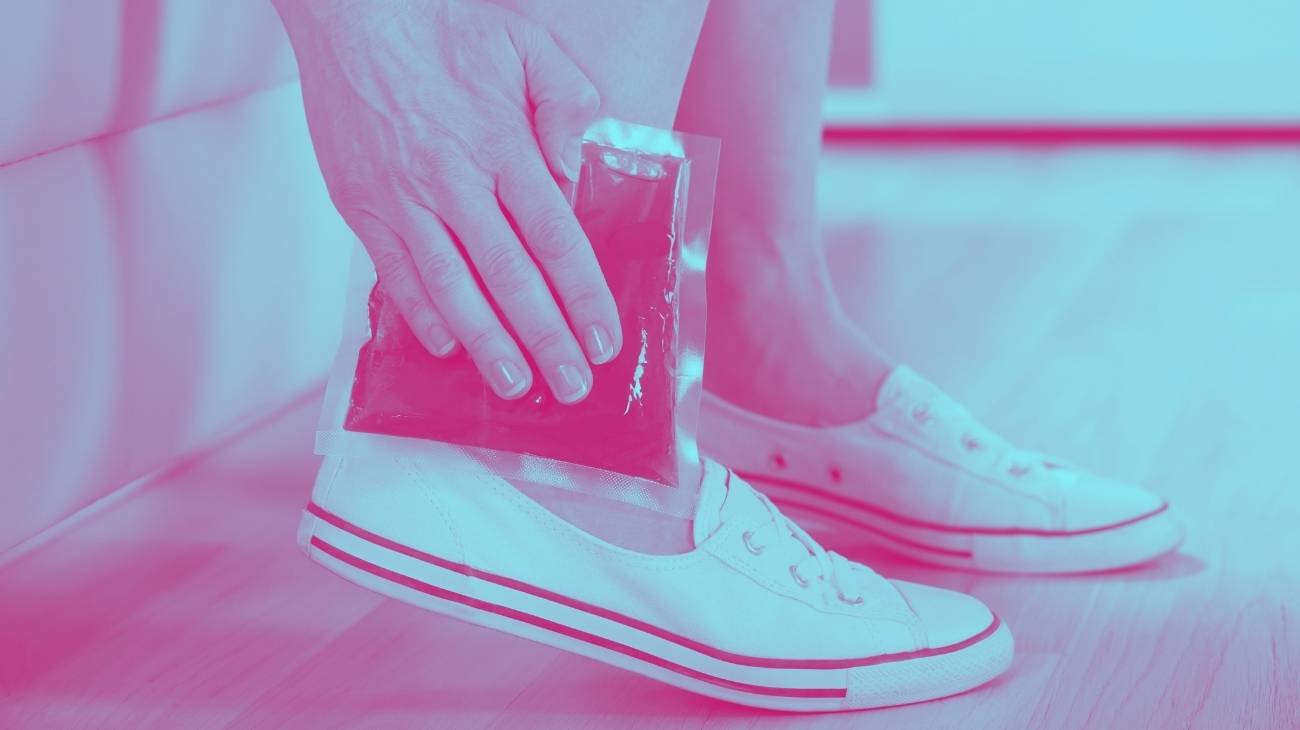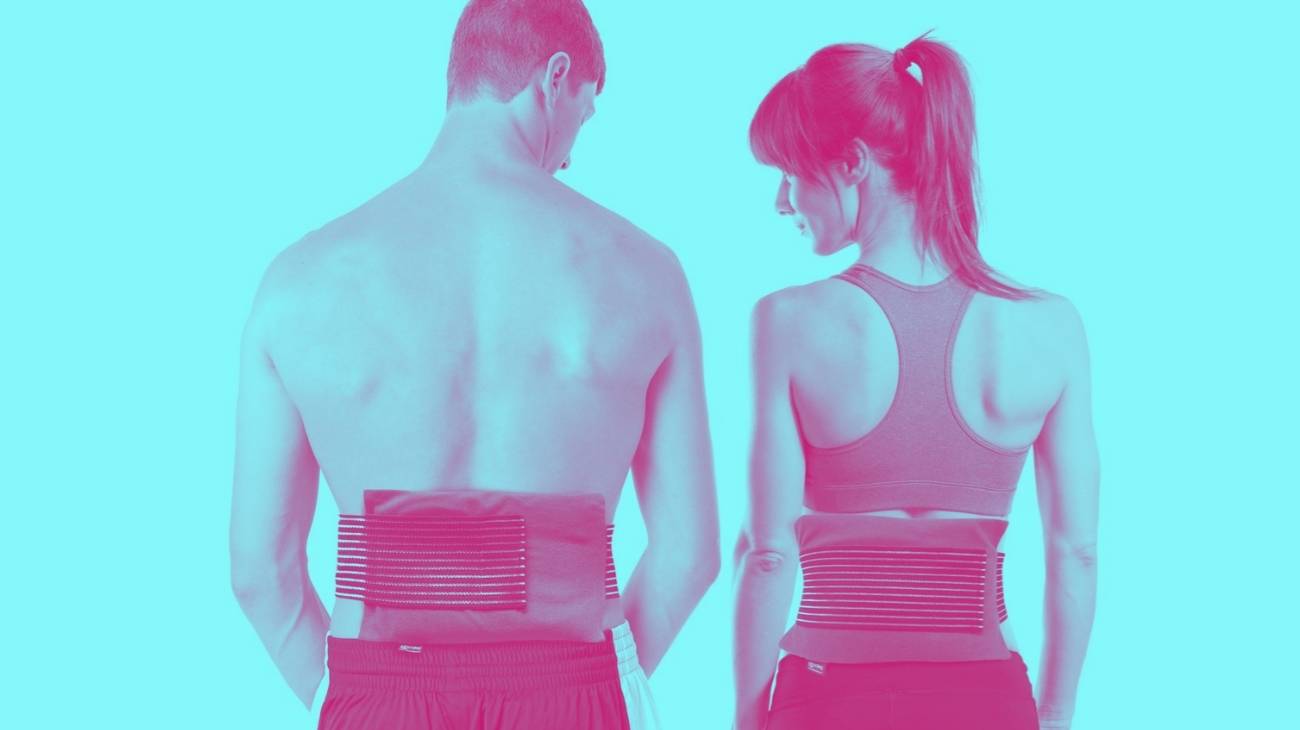- What is the best ice gel pack for bone fractures?
- Video: How to use hot and cold gel packs?
- Types of hot & cold packs you should know about
- What is the first aid for a bone fracture?
- Benefits of ice gel packs to relieve pain after a broken bone
- How can ice gel packs be used to reduce swelling around the fracture?
- The best hot and cold gel packs for pain relief
If you have ever suffered a fracture, you know very well how painful this type of injury can be. A fracture can be very traumatic for the patient and must be treated according to the appropriate procedure. Fortunately, today we will cover first aid for a fracture.
You will also learn how to use hot and cold gel packs to relieve the pain of a fracture. Undoubtedly a very effective therapy due to its pain-relieving and anti-inflammatory effects.
What is the best ice gel pack for bone fractures?
- 2 units per order
- Double sealed to prevent leakage
- Various sizes
- Suitable for any area of the body
- Cold therapy only
- Not very flexible
Its inner fabric is soft and comfortable, but in high temperatures it can cause discomfort because it accumulates sweat. Do not worry about its position during the sessions, because thanks to the Velcro straps will not slide down the leg, so you can wear it for several hours without having to adjust it. It is suitable for treating arthritis symptoms and can be used on varicose legs.
- Material: Nylon
- Uses: Shoulder, Leg, Back
- Type of adjustment: Velcro strap
- Cover: Yes
- No. of units: 1
- Velcro straps
- Optimal fit
- Various sizes
- Quality materials
- Bulky design
- Cold therapy only
If you choose thermotherapy, you can heat the thermal bag in the microwave or boil it for 10 minutes, but you must be careful not to exceed the temperature because it could cause skin irritation. It is ideal for treating symptoms of arthritis, patellar tendinitis and muscle overload in the calf muscles by simply cooling the gel pack for 2 to 3 hours in the refrigerator.
- 2 Units per order
- Quality materials
- One size only
Choose this gel pack to treat hamstring pulls, calf strains, as well as patellar or Achilles ligament inflammation. Just place it on the injured area and adjust its straps until you get the necessary support to keep the temperature under control. This action will also help blood circulation, which will shorten the recovery period. It may happen that the straps start to break after a while.
- Microwave safe
- Protective cover
- Short duration hot/cold
It is recommended to combine cold therapy with the heat method to increase blood circulation and stimulate the elimination of toxic substances lodged in the tissues. Do not waste any more time and choose for your health this package with the doctor that you can use it anywhere you go. You have to consider that, since it does not have adjustable straps, you will not be able to use the compression therapy, so you will have to hold it with your hand or with some other compressive garment.
- Material: Nylon
- Uses: Various body areas
- Type of adjustment: Velcro strap
- Cover: Yes
- No. of units: 2 Gel Packs
- Adjustable Velcro strap
- 2 high quality gel packs
- Hot/cold therapy
- Suitable for various body areas
- Medium flexibility with cold therapy
- Not microwaveable
The thermal wrap can be used to combat the symptoms of arthritis, tennis elbow syndrome and inflammation in the synovial bursae. All you have to do is get the necessary temperature in the microwave or refrigerator and then adjust the strap until the joint is stabilized. The compression system may be insufficient for some users.
- Material: Nylon
- Uses: Elbow, Wrist, Knee
- Type of adjustment: Strap with Velcro
- Cover: Yes
- No. of units: 2 Gel Packs
- Includes 2 Gel Packs
- Long lasting cold therapy
- Cold therapy only
You will not need much time to achieve the therapeutic temperature, since by simply placing it in the microwave or in the refrigerator you will obtain the results you are looking for to apply to the affected area. Keep in mind that, during use, the adjustable straps may weaken and lose their holding capacity.
- Microwaveable
- Heat/cold therapy
- One size only (M)
It is useful for treating plantar fasciitis, Achilles tendonitis and ankle sprains, as the size covers all areas that are sensitive to injury. Its multifunctional design will serve you to adapt the thermal bag to the affected places and hold them with great precision. The Velcro straps may lose effectiveness as you wear this thermal ankle brace.
- Heat/cold therapy
- Microwaveable
- Short therapy duration
Its design with soft seams helps maintain comfort during use and compresses sensitive areas through the gel pack. This generates the necessary support to transmit cold or heat effectively. Use the refrigerator and microwave to achieve the desired therapeutic temperature that relieves pain and deflates the ankle. It is important to consider that, in some users, the efficiency in maintaining the temperature was minimal.
Video: How to use hot and cold gel packs?
Types of hot & cold packs you should know about
What is the first aid for a bone fracture?
A fracture is an injury that consists of a broken bone. It usually occurs when the bone is stressed beyond its capacity, but can also be caused by a bone disease. It can be closed (without the bone breaking through the skin) or open (with accompanying skin damage).
The most important first aid measures in the event of a fracture are explained below:
Assess the patient
Assess the person's breathing, circulation and consciousness: is there respiratory or cardiac failure, is there bleeding? You should also ask the injured person if they are in pain, if they feel anything or if they are mobile.
You will have to ask the emergency services for help, yes:
- The affected person's vital functions are severely impaired. If the person is not breathing or the heart is not beating, perform CPR.
- Serious bleeding occurs.
- Any small movement or pressure produces
- There is deformity in the affected area.
- The bone has broken through the skin.
- The end of the arm or leg is numb or bluish.
- There is a suspected fracture of the head, neck or back.
- The person loses mobility in the limbs or has pain in the neck or back. If this is the case, it can be assumed that the spinal cord is broken. In this case, the head, neck and trunk must be held in exactly the position in which they were found. When lifting the body, the head, the middle of the body and the legs must be moved simultaneously.
Stop the bleeding
It is important to stop the bleeding from the fracture. To do this, apply pressure to the injured area with sterile gauze or a clean cloth.
Remember these points too:
- If blood seeps through the cloth, put another cloth on top and keep pressing.
- Elevating the wound above the level of the heart helps to control bleeding.
- You should wrap the affected area with enough pressure to stop the bleeding, but avoid moving the bone as this can cause further damage.
- If the blood comes out bright red and pulsating, you can assume that an artery has been hit. However, if the bleeding is blue-red, continuous and weak, it must be coming from a vein.
- If the bleeding does not stop, apply a pressure bandage, provided you know how to apply it properly. However, this method is only used as a last resort as it cuts off circulation completely.
Immobilising the wound
If you are able to immobilise the wound and have no professional help, you should splint the affected area. To do this, use a rigid material (folded sheets or towels, magazines, splints, etc.) and secure it with tape, bandages, etc.
Remember that:
- You should not align or reinsert the bone as this could be dangerous.
- The tie should support the splint but also allow circulation. If you notice that your fingers or toes are numb, pale or cold, loosen them a little.
- Do not put the splint directly on the fracture.
- You can also immobilise an arm with a sling made from a large scarf, cloth or shirt.
- If the fracture is near a joint, immobilise the two bones adjacent to the joint.
Apply cold and elevate the wound
Apply cold to the affected area to reduce swelling and relieve pain if the injury is recent. If applied within 48 hours, the blood vessels close and the local temperature drops. This reduces the blood supply and inflammatory substances, leading to gradual pain relief.
If you choose to use ice, you should wrap it in a towel or cloth before placing it on the skin to avoid burning or damaging the skin. We recommend using a cold-warm gel pack, which is easier and more convenient to use. Although cold alone can do a lot, sometimes it is not enough to reduce swelling completely. To reduce swelling, it is also advisable to keep the wound higher than the heart if possible.
Benefits of ice gel packs to relieve pain after a broken bone
Cryotherapy involves the use of cold for therapeutic purposes, which is why it is widely used in the treatment of musculoskeletal injuries such as broken bones. In fact, contact with low temperatures can combat pain, inflammation and bleeding.
The main benefits of applying cold to a fracture are as follows:
- Anti-inflammatory effect: Cold is able to reduce inflammation of the tissues caused by injuries such as fractures. Low temperatures cause vasoconstriction and a decrease in metabolism. This leads to a decrease in vasoactive substances, which reduces the body's inflammatory response and reduces swelling.
- Less pain: Cold can numb the nerves, reducing pain from injuries such as broken bones. This is due to a mechanism that partially or completely blocks the transmission of nerve impulses from nociceptors (pain receptors) to the central nervous system. Even cold is able to numb an irritated nerve.
- Vasoconstriction: The application of cold causes blood vessels to constrict or vasoconstrict, resulting in a decrease in blood flow. This is a thermoregulatory process triggered by the sympathetic nervous system when stimulated by low temperatures. More specifically, vasoconstriction leads to an increase in blood pressure and viscosity and a decrease in plasma volume, which increases cardiac work. In this way, it helps to stop or inhibit bleeding and is therefore extremely useful in the event of a fracture.
How can ice gel packs be used to reduce swelling around the fracture?
Cold gel packs are ideal for relieving pain and swelling from injuries such as fractures. These packs are filled with a gel that can reach low temperatures and maintain them for a long period of time.
But how do you use a cold gel pack to treat fractures? Here's how:
- It is important that the compress reaches the temperatures specified by the manufacturer. It is usually sufficient to place it in the freezer for 2 hours
- After this time, take out the cryotherapy gel pack and check that it is at the right temperature by touching it. If it is too cold, leave it in the fresh air to warm up a bit, but if it is not cold enough, put it back in the freezer.
- Once it has reached the desired temperature, carefully place it on the break without applying much pressure. Some of the gel cold packs we offer come with a compression band to keep them in place. It is important to know that our gel packs have a soft touch cover to avoid cold burns.
- It is recommended to apply the cold for 15 minutes every 2-3 hours for the first 48-72 hours after injury. However. We recommend that you do 3 sessions of 10 minutes each with breaks of at least 2 hours. Remember that overexposure to low temperatures can be dangerous.
Remember that cold is contraindicated for people with cold allergies, diabetes, cardiovascular, kidney and visceral diseases, among others. Just follow these recommendations and you can use cold gel packs to relieve fracture pain. Remember that it is always necessary to see a doctor to treat the injury properly.





































